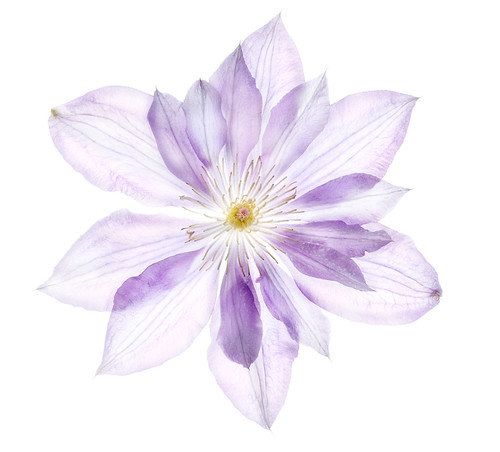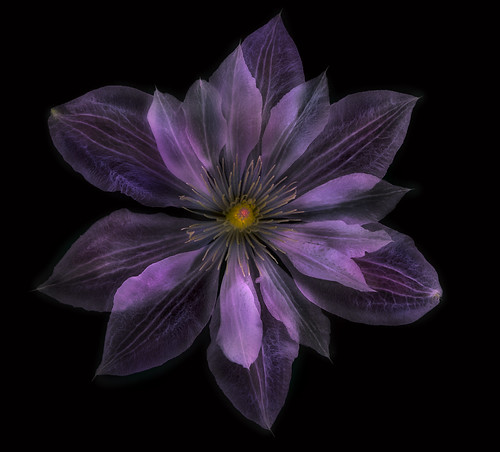View this image larger.
Yesterday, a beautiful day with plenty of cloud cover and a strong wind, and the garden in full bloom, was perfect for indoor photography of flowers. I placed this dinner-plate-sized clematis blossom on a light box for transparency, and combined six exposures. All were skewed towards high key, meaning a right-facing histogram and and over-exposure bias (according to the camera, but what does the camera know?).
The clematis on white was my Annakin Skywalker, and I started the conversion process to Darth Clematis and the dark side (the image below) by converting the image to LAB color and inverting its L (Luminance) channel. From there, it was building up the dark side piece by piece through at least fifteen layers.
Note: if my silly Star Wars metaphor means nothing to you, you probably don’t have kids of the right age, and may the force be with you!
View this image larger.
In my passionate embrace with Photoshop, I often don’t make as good notes as I should about exactly what steps I’m taking. That’s why I save the history log of my Photoshop moves to the metadata of each image. To set this up, open the General tab of the Photoshop Preferences dialog and make sure History Log is checked. Choose to save the log items to the image metadata (you can also save it to a text file). Finally, make sure that the Edit Log Items drop-down list is set to Detailed.
Adding your Photoshop History log to your metadata will increase your file size, and it won’t tell you everything. Painting on a layer mask with the Brush tool is just listed as “Brush.” Photo metadata is often incomplete. You won’t learn from the image metadata that I combined a number of exposures (you just get the background layer). But all that said, you do a pretty good picture of the steps taken.
Recently, the history log of my Photoshop moves started showing up in the EXIF data published by Flickr. If you scroll down the links, you too can read the Photoshop history log of this Clematis, and on the dark side.
Speaking of Flickr, and the community of photographers and artists on the Internet generally, I find myself excited about the way I am constantly exposed to new ideas and artists through contacts on Flickr.
I belive that photographers need to look at visual artists beyond photography (for more on this topic, see this interview with me). M.C. Escher has obviously influenced my composites.
Lately, I’ve been exploring the work of Jacques Hnizdovsky, pointed out to me by a Flickr friend, a twentieth century artist known for his paintings and woodblock prints. Hnizdovsky’s work is intelligent, humorous, and photographic in the best sense of the word—astounding for imagery created as woodcuts. A true inspiration.


Pingback: Self Portrait | Photoblog 2.0